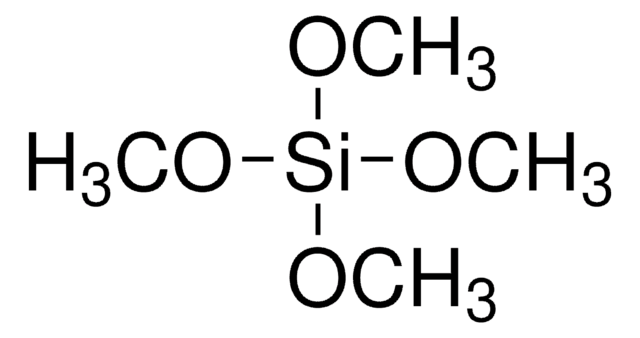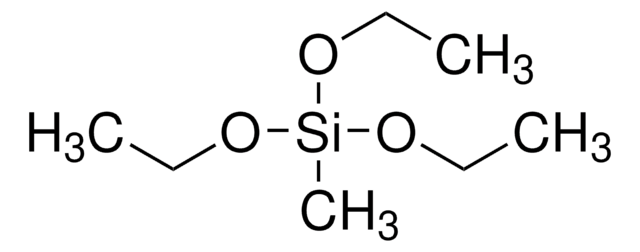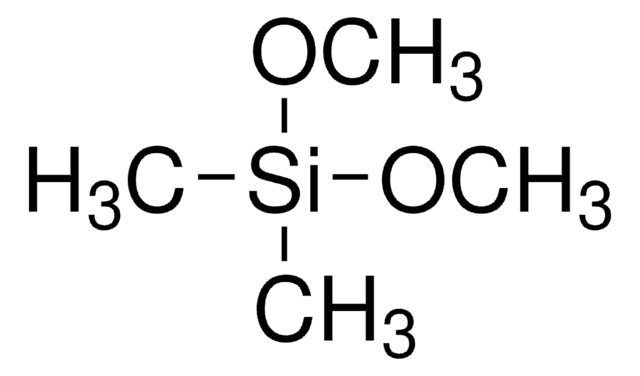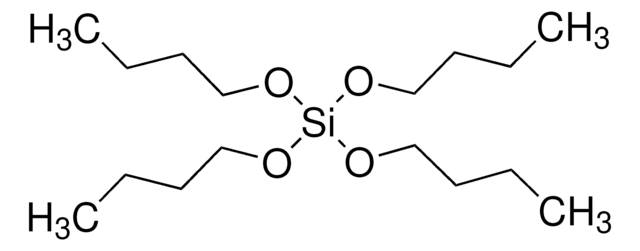218472
Tetramethyl orthosilicate
98%
Sinonimo/i:
Tetramethoxysilane
About This Item
Prodotti consigliati
Densità del vapore
5.25 (vs air)
Livello qualitativo
Tensione di vapore
13 hPa ( 20 °C)
Saggio
98%
Stato
liquid
Indice di rifrazione
n20/D 1.368 (lit.)
P. ebollizione
121-122 °C (lit.)
Punto di fusione
−4 °C (lit.)
Densità
1.023 g/mL at 25 °C (lit.)
Stringa SMILE
CO[Si](OC)(OC)OC
InChI
1S/C4H12O4Si/c1-5-9(6-2,7-3)8-4/h1-4H3
LFQCEHFDDXELDD-UHFFFAOYSA-N
Cerchi prodotti simili? Visita Guida al confronto tra prodotti
Applicazioni
Avvertenze
Danger
Indicazioni di pericolo
Classi di pericolo
Acute Tox. 1 Inhalation - Eye Dam. 1 - Flam. Liq. 3 - Skin Irrit. 2
Codice della classe di stoccaggio
3 - Flammable liquids
Classe di pericolosità dell'acqua (WGK)
WGK 1
Punto d’infiammabilità (°F)
78.8 °F - closed cup
Punto d’infiammabilità (°C)
26 °C - closed cup
Dispositivi di protezione individuale
Eyeshields, Faceshields, Gloves, type ABEK (EN14387) respirator filter
Scegli una delle versioni più recenti:
Possiedi già questo prodotto?
I documenti relativi ai prodotti acquistati recentemente sono disponibili nell’Archivio dei documenti.
I clienti hanno visto anche
Articoli
Silica is a very popular inorganic nanomaterial used in a wide range of applications including fillers for rubber, catalyst supports, separation media, carriers in food and agriculture, and abrasive/anticaking agents in cosmetics. It is also widely believed to be an important material for biomedical applications for following reasons.
Magnetism and magnetic materials have been of scientific interest for over 1,000 years. More recently, fundamental investigations have focused on exploring the various types of magnetic materials and understanding the magnetic effects created by electric currents.
Synthesis of Melting Gels Using Mono-Substituted and Di-Substituted Alkoxysiloxanes
The properties of many devices are limited by the intrinsic properties of the materials that compose them.
Il team dei nostri ricercatori vanta grande esperienza in tutte le aree della ricerca quali Life Science, scienza dei materiali, sintesi chimica, cromatografia, discipline analitiche, ecc..
Contatta l'Assistenza Tecnica.












